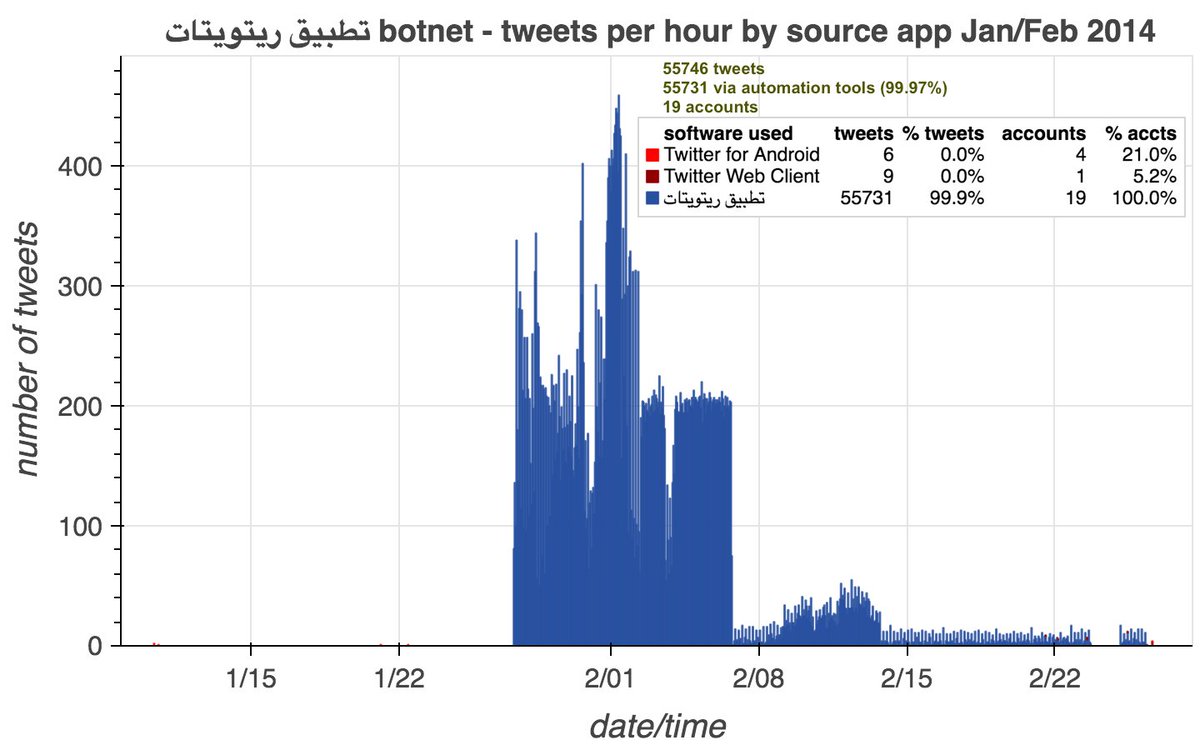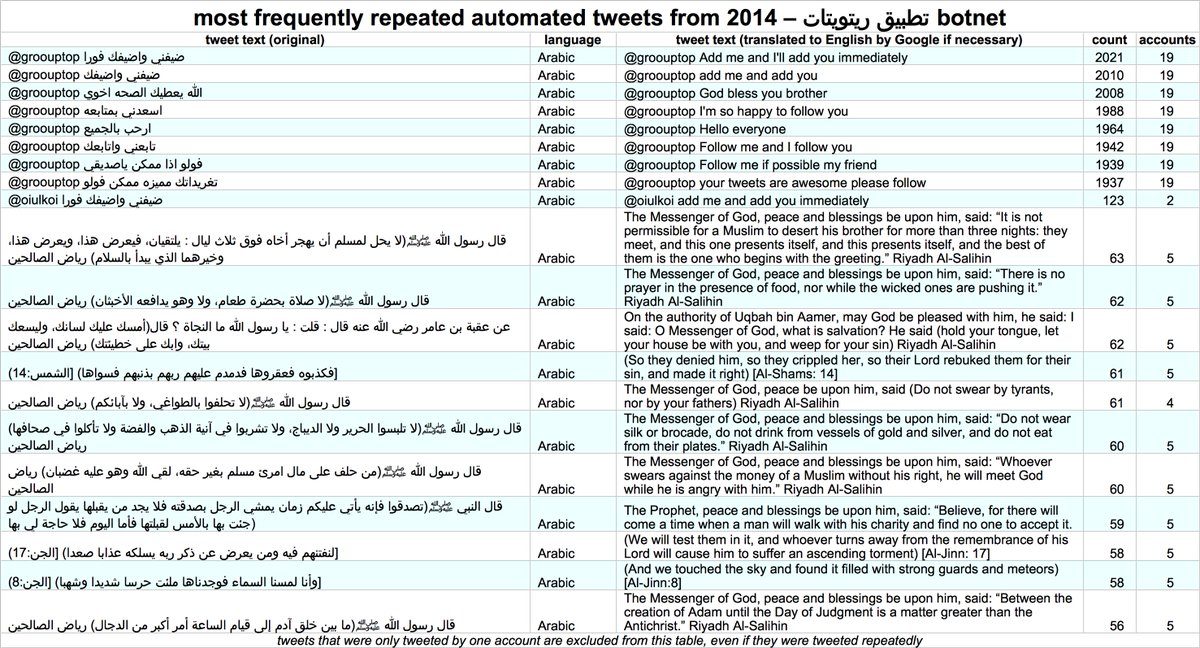It's a great day for a thread on some interesting aspects of the tweets and followers of @Ravagiing (permanent ID 2191704602), the right-wing Twitter account featured in a recent @BuzzFeedNews investigation.
cc: @ZellaQuixote
buzzfeednews.com/article/kenben…
cc: @ZellaQuixote
buzzfeednews.com/article/kenben…
Although @Ravagiing is presently a right-wing Twitter account that tweets in English, it wasn't always so. Back in early 2014, it tweeted almost exclusively in Arabic. It appears to have gone silent in late April 2014 and woke back up in April 2018 as an English-language account. 





Back in 2014 when it tweeted in Arabic, @Ravagiing was 100% automated, tweeting around the clock via a custom app. Most of the automated Arabic content looks like Quran verses. 



Unsurprisingly given that it originally tweeted in Arabic, almost all of of @Ravagiing's early followers are Arabic-language accounts. 327 of those followers are accounts with zero likes that were created in batches and followed @Ravagiing at more or less the same time. 



These 327 accounts are part of a dormant botnet consisting of (at least) 502 accounts created in batches in 2013 that retweeted a bunch of tweets in 2014/2015 via a custom app called "rtwetat(dot)com". These bots have retweeted thousands of tweets but none has ever liked a tweet. 







Back when it was active, this botnet both retweeted and followed various Arabic-language accounts. (The bots followed but did not retweet @Ravagiing.) The tweets retweeted by the botnet have far more retweets than likes, sometimes hundreds of times as many. 





For more information (and context) on the larger story of which @Ravagiing is a part, read this article by @kenbensinger and @jvgarrison:
buzzfeednews.com/article/kenben…
buzzfeednews.com/article/kenben…
One more detail: @Ravagiing wasn't always named @Ravagiing. Back in 2014 when it was tweeting in Arabic, it was named @lkjhdl. (Retweets downloaded via the Twitter API contain the name of the account being retweeted at the time of the retweet.)

https://twitter.com/conspirator0/status/1361173386290999296

As it turns out, at least 18 other accounts were posting the same lineup of automated tweets @Ravagiing (formerly @lkjhdl) using the same app (تطبيق ريتويتات) back in 2014. The content is a mix of follower gain spam and religious tweets, all in Arabic.


https://twitter.com/conspirator0/status/1432943911744462852


Even more interestingly, every single one of these 19 accounts has changed its handle at least once subsequent to the early 2014 barrage of automated tweets, with some having renamed themselves multiple times. 



Several of these renamed accounts have resumed tweeting, but the content is no longer identical (or even similar, mostly) and they no longer appear to be automated. This fact combined with the name changes strongly suggests that the accounts changed hands since their botnet days. 



• • •
Missing some Tweet in this thread? You can try to
force a refresh































